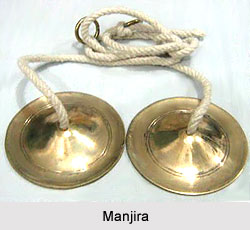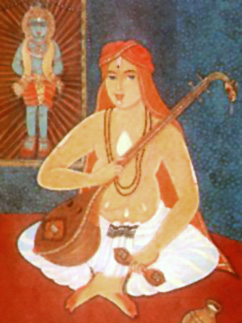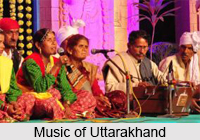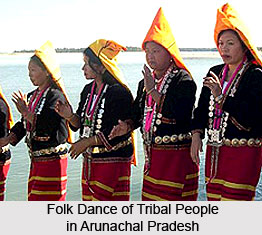Introduction
Dadra is a musical form that falls in the category of what is known as `Light Classical` Hindustani Music. It refers to two separate but originally linked concepts in Hindustani classical music. The name is derived from its association with the dadra style of singing. And the dadra style of singing in turn, derives its name from the place where it began.
Origin of Dadra
The Dadra is semi-classical form that is somewhat similar to thumri. Thumri is another light classical form, in most respects. In fact, according to legendary musicians, the Dadra and the Thumri emerged together sometime around the middle of the nineteenth century in the court of the Emperor Wajid Ali Shah. The form which was sung till that time as the Lachari evolved into the Thumri and the Dadra. However, though the Dadra resembles the Thumri in so many aspects, it is much looser and allows more freedom for the artist.
Dadra as a Musical Genre
The text of the Dadra is amorous, affectionate and sentimental. Thus, the songs of Dadra mostly deal with love. It was originally accompanied by the tala (rhythmic cycle) Dadra, which is probably how it gets its name. Apart from the Dadra tala, various other talas used are kaherava of 8 beats, chanchar, muglai or any other light tala. It is commonly performed in light raagas such as mand, pilu or pahadi. It may also be sung madhya laya or even faster according to the requirements.
The Dadra genre uniquely blends cultural influences, with its Sthayi, traditionally composed in Braj Bhasha while the Antara occasionally features Urdu lyrics. This distinctive fusion reflects the harmonious coexistence and intermingling of diverse traditions within Indian classical music.
Compositions in Dadra Taal
Dadra tal, unlike the more prominent classical tals, does not boast an extensive repertoire of compositions. Its primary role lies in accompaniment, making it less common in tabla solos. In light-classical settings, tabla solos often involve short, repetitive laggi-style patterns. Due to its adaptable nature, many compositions from other tals, such as tintal, are easily modified for Dadra by adjusting the rhythmic structure.
Typically associated with emotional, sentimental, and affectionate themes, Dadra songs often explore love and devotion. The genre derives its name from Tala Dadra, the rhythmic framework that originally accompanied these compositions. Over time, Dadra has incorporated other rhythmic variations, including Chanchar and Mughlai tals, enriching its versatility.
Dadra tal follows a six-matra (time unit) cycle and is generally played at a medium or slower tempo. However, faster-paced variations also exist, with some musicians referring to them as a distinct tal, Khemta, while others consider them an accelerated version of Dadra, retaining its original identity.
This tal's adaptability and emotive appeal have made it a staple in light-classical genres, including thumri, ghazal, and folk music across regions. Its rhythmic charm shines through in its representation within diverse musical traditions.
Instruments Accompanying Dadra
Among the instruments used to accompany dadra are Tabla, Sarangi, Harmonium and Tanpura. Frequently, singers follow a thumri with a dadra, in a sequence like bara khayal being followed by a chhota khayal. Theoretically, therefore, it is distinguished from thumri by tala. The same group of singers who cultivate thumri as a specialty cultivate dadra as well. Among these performers, two particularly famous ones who deserve mention here are Begum Akhtar and Rasoolan Bai.
Popularity of Dadra
Dadra is quite popular and commonly found in qawwalis, bhajans, ghazals, and folk music throughout India. Dadra is also popularly used in various film songs due to its ease of performing. The places that are famous for Dadra are Agra and Bundelkhand region.
Dadra tal, much like kaharawa, holds a prominent place in South Asian music, resonating across tribal, folk, spiritual, and popular genres. While kaharawa serves as the standard 4/4 rhythm, dadra defines the 3/4 rhythmic framework of the region. This versatile tal often accompanies light-classical song forms such as dhun, thumri, and ghazal, adding depth and charm to their performances. It is common for classical music concerts to conclude with one or two of these compositions, leaving audiences captivated by their elegance.




